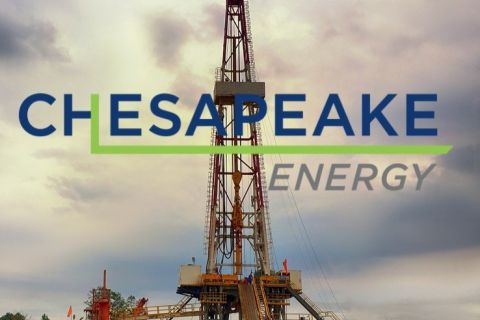
The midstream industry is set to take a more cautious approach in 2015 in response to the downturn in crude and liquids prices, but that doesn’t mean there won’t be steady activity in the sector. The two largest natural gas processors and NGL producers in Midstream Business’ most recent Midstream Rankings, DCP Midstream Partners LP (NYSE: DPM) and Enterprise Products Partners LP (NYSE: EPD), both expect to keep an eye on the bottom line while also preparing for the future through growth projects.
“In response to the industry downturn, we’ve shifted our focus to being prudent in the near-term, with a strategic focus on capital efficiency, operational reliability, contract reformation and expense management,” Wouter van Kempen, chairman and CEO of DCP Midstream Partners, said during a recent conference call to discuss fiscal year (FY) 2014 earnings.
This prudence includes closer management of its distributions, capital spending and dropdowns in the coming months. DCP Midstream Partners will be moving forward with more than $300 million in new, mainly fee-based, projects this year.
“Due to uncertainty around our producers’ capital budgets, we plan to prudently manage our capital spend while watching their drilling programs, so that we do not get ahead of them,” Bill Waldheim, president of DCP Midstream Partners, said during the call. “We’ll remain flexible, preparing for future opportunities around our footprint, like securing new plant permits and ordering long lead time equipment so we can quickly ramp up, if and when needed.”
One of the projects that DCP Midstream Partners will be going forward with will be the Panola NGL Pipeline, which they are joint venture partners on along with Enterprise, Anadarko Petroleum Corp. (NYSE: APC) and MarkWest Energy Partners LP (NYSE: MWE). Enterprise will operate and own a 55% interest in the system, which will run 181 miles from Carthage, Texas, to Mont Belvieu, Texas.
“We are very focused on controlling costs, while at the same time working to develop new projects to add value for our investors,” Mike Creel, CEO of Enterprise Products Partners, said during a recent conference call to discuss FY 2014 earnings.
Both Enterprise and DCP Midstream Partners anticipate that their current assets will help them steer clear of danger while prices remain challenged.
“We believe our fee-based, integrated and diversified business model positions us to succeed in a challenging commodity price environment such as we have now and our financial flexibility and healthy distribution coverage provides the ability for us to continue distribution growth while pursuing our growth plans,” Creel said while adding the company has $6.1 billion of organic growth projects under construction that will be completed in 2015 and 2016.
The more judicious approach of both companies makes sense, since there isn’t much clarity on where prices are headed.
“Global energy markets are somewhere between turmoil and chaos,” Jim Teague, Enterprise Products Partners’ COO, said during the conference call. “We have no clue how low prices may go or how long they will stay depressed, nor does anyone else.”
The company has a marketing function in each of its business units that is designed to take advantage of opportunities that arise from market fluctuations. “The Enterprise business model thrives on dislocation and adding value by capturing opportunities when there is chaos,” Teague added.
The regions that Teague expects to be the most active during the downturn are the Eagle Ford and Permian due to the higher netbacks they have thanks to their proximity to the Gulf Coast and its end-use markets and large array of midstream infrastructure.
These should help Enterprise manage the downturn since the company is a key midstream provider in each region with connections to other systems the company owns that will help to provide flow assurances and market choices.
“If you have to go through a downturn, the Eagle Ford and Permian are not a bad place to have in your backyard. There’s no doubt that 2015 will present significant challenges across the entire upstream and therefore related midstream value chain,” Teague said. “Margins will be thinner and landing new projects will be competitive. However, all of the assets we have recently constructed or have under construction are backed by long-term commitments.”
The bulk of these new projects also have volume commitments that are set to ramp up over the next few years, which will help to provide stable and increasing revenues.
Waldheim also stated that DCP Midstream Partners’ assets in the Eagle Ford will help the company weather the downturn. “The Eagle Ford continues to see strong production due to its economic cost of drilling and location relative to the Mont Belvieu market. [We] are in the core area of the Eagle Ford. We are very pleased with the Eagle Ford’s current and future projected earnings growth, even in the current environment,” he said.
Teague noted that Enterprise stands to benefit from its crude assets being connected to the Cushing hub, which is more active due to the dislocation of waterborne barrels caused by the price downturn.
“These kind of market cycles are just the way it’s always been ... We’ve picked up a few prizes in past downturns, as people found themselves unprepared or in denial about downcycles,” Teague said. Such past deals include the Mid America (MAPL) Pipeline and GulfTerra Energy Partners LP.
Though Enterprise has been active in the M&A market in past downturns, Creel stated the company would not chase deals. “If opportunities present themselves [with] assets that fit our system, we will take a look at them. M&A has to compete with our organic projects as well. I don’t think our philosophy has changed over time; I think the markets change over time and we act when it makes sense,” he said.
The positive to take from this is that Enterprise has performed well during past downturns and thrives on change, Teague added. In addition, he said that the U.S. oil and gas industry will continue to produce as it remains a focal point on the global stage.
“Global markets understand that we have more hydrocarbon resources that we’re going to need and much of the world’s production comes from some very unstable places in the Middle East, Venezuela, and North Africa. They also understand that [low] oil prices aren’t going to help many of these countries’ geopolitical dynamics. As demand grows, weak economies won’t be here forever and the U.S. continues to move forward from a position of shortage to one of surplus. Rebalancing of global markets is going to continue to take place and the U.S. oil and gas industry will not be denied,” Teague said.
This is a similar viewpoint to the one held by van Kempen, who noted that the oil and gas industry was a “must run business” that may slow down, but won’t stop.
Both Teague and van Kempen highlighted the integrated nature of their company assets as a prime reason they expect to be able to weather any downturn as they are designed to open new opportunities and revenue streams.
“It would be nice if prices were higher and the environment was such that money was falling from the sky. Those days are over for now. Today, we are in an environment where you have to be relentless about managing your costs and where you have to look for and earn every penny. Looking for and picking up pennies is a lot harder than catching money falling from the sky. Some have never done it,” Teague said.
Like Enterprise, DCP Midstream has a track record of managing the cyclical nature of the industry. “The DCP enterprise has a long history, approximately 90 years, of prudently managing through the low commodity environments. We’re well underway on tightening our belts with a strategic focus on prudently managing the DCP enterprise to be an even fitter and stronger company,” van Kempen said.
Contact the author, Frank Nieto, at fnieto@hartenergy.com.
Recommended Reading
Petrie Partners: A Small Wonder
2024-02-01 - Petrie Partners may not be the biggest or flashiest investment bank on the block, but after over two decades, its executives have been around the block more than most.
Chesapeake Slashing Drilling Activity, Output Amid Low NatGas Prices
2024-02-20 - With natural gas markets still oversupplied and commodity prices low, gas producer Chesapeake Energy plans to start cutting rigs and frac crews in March.
Hess Corp. Boosts Bakken Output, Drilling Ahead of Chevron Merger
2024-01-31 - Hess Corp. increased its drilling activity and output from the Bakken play of North Dakota during the fourth quarter, the E&P reported in its latest earnings.
Matador Resources Announces Quarterly Cash Dividend
2024-04-18 - Matador Resources’ dividend is payable on June 7 to shareholders of record by May 17.
CEO: Coterra ‘Deeply Curious’ on M&A Amid E&P Consolidation Wave
2024-02-26 - Coterra Energy has yet to get in on the large-scale M&A wave sweeping across the Lower 48—but CEO Tom Jorden said Coterra is keeping an eye on acquisition opportunities.





